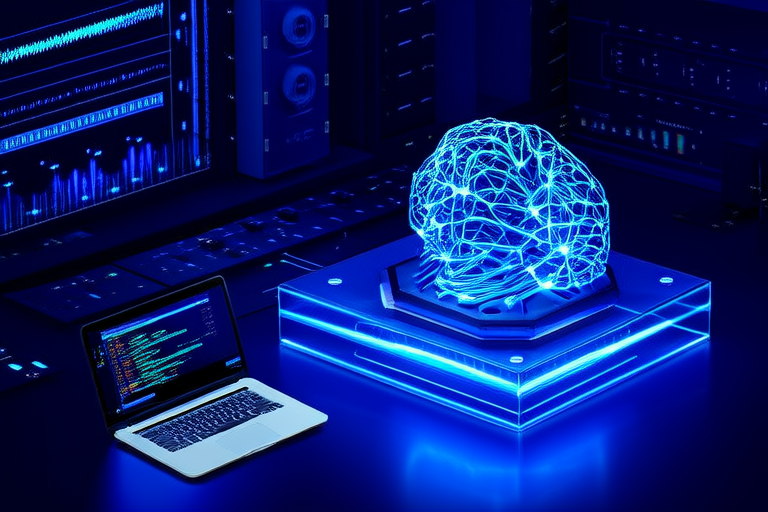Unlocking the Future: A Deep Dive into Machine Learning and Deep Learning
Introduction
Machine learning (ML) and deep learning (DL) are two of the most transformative technologies in today’s rapidly evolving technological landscape. Both fields involve training algorithms to learn patterns from data, enabling computers to make decisions or predictions without explicit programming. While ML encompasses a broad range of techniques, DL represents an advanced subset that leverages neural networks to model complex patterns.
The significance of ML and DL lies in their ability to automate tasks, improve efficiency, and drive innovation across various industries. From healthcare to finance, retail to transportation, these technologies are making significant impacts by enabling predictive analytics, personalized recommendations, and autonomous systems.
Understanding Machine Learning
Machine learning is a branch of artificial intelligence that focuses on developing algorithms that can learn from and make predictions or decisions based on data. At its core, ML involves creating models that can generalize from past experiences to new, unseen data.
Types of Machine Learning
- Supervised Learning: Involves training models on labeled datasets, where input data is paired with corresponding output labels. Common applications include image classification and spam detection.
- Unsupervised Learning: Focuses on finding hidden patterns or intrinsic structures in unlabeled data. Clustering and anomaly detection are typical use cases.
- Reinforcement Learning: Involves training agents to make a sequence of decisions by rewarding or penalizing them based on their actions. Applications include game playing and robotics.
Real-world applications of supervised learning include email filtering, fraud detection, and customer segmentation. Unsupervised learning is widely used in recommendation systems and market basket analysis. Reinforcement learning powers self-driving cars and robotic arms.
Deep Learning: An Advanced Approach
Deep learning is a specialized form of machine learning that uses neural networks with multiple layers to automatically extract features from raw data. Unlike traditional ML methods, which often require manual feature engineering, DL models can learn hierarchical representations directly from data.
The architecture of neural networks is central to deep learning. These networks consist of interconnected nodes (neurons) organized into layers, including input, hidden, and output layers. Each layer processes information and passes it to the next, allowing the network to learn increasingly abstract representations.
Data and computational power are crucial for deep learning. Large datasets are necessary to train effective models, while powerful hardware, such as GPUs and TPUs, accelerates the training process.
Key Techniques and Algorithms
Several algorithms are commonly used in both machine learning and deep learning. Some of the most popular include:
- Decision Trees: A simple yet powerful algorithm for classification and regression tasks. Decision trees split data into subsets based on feature values, leading to a tree-like structure.
- Random Forests: An ensemble method that builds multiple decision trees and combines their outputs to improve accuracy and robustness.
- Support Vector Machines (SVM): A versatile algorithm for classification and regression, SVM finds the optimal hyperplane that separates classes in feature space.
- Convolutional Neural Networks (CNNs): Specialized neural networks designed for image and video data. CNNs use convolutional layers to automatically detect spatial hierarchies of features.
- Recurrent Neural Networks (RNNs): Designed for sequential data, RNNs maintain a memory of previous inputs, making them suitable for tasks like speech recognition and time series prediction.
- Transformers: A recent breakthrough in natural language processing, transformers enable efficient parallelization and have achieved state-of-the-art results in many NLP tasks.
These algorithms have diverse use cases, ranging from image and text classification to time series forecasting and natural language generation.
Challenges and Limitations
Despite their potential, machine learning and deep learning models face several challenges:
- Overfitting: Occurs when a model learns too much from the training data, resulting in poor generalization to new data. Regularization techniques, cross-validation, and dropout can help mitigate overfitting.
- Underfitting: Happens when a model is too simplistic to capture the underlying patterns in the data. Increasing model complexity or adding more features can address underfitting.
- Data Bias: Models trained on biased datasets can perpetuate or even amplify existing biases. Ensuring diverse and representative datasets is crucial.
- Ethical Concerns: Issues like privacy, fairness, and transparency must be addressed to ensure responsible deployment of AI systems.
To overcome these challenges, practitioners should adopt best practices, such as continuous monitoring, transparent reporting, and collaboration with domain experts.
Future Prospects
The future of machine learning and deep learning holds exciting possibilities. Emerging trends include:
- Natural Language Processing (NLP): Advances in transformer-based models are revolutionizing language understanding and generation, enabling applications like chatbots, translation, and summarization.
- Computer Vision: Improvements in CNNs and other architectures are enhancing object detection, facial recognition, and medical imaging analysis.
- Autonomous Systems: Self-driving cars, drones, and robots are becoming more sophisticated, driven by advancements in perception, decision-making, and control.
- Edge Computing: As devices become more capable, edge computing allows for real-time processing and decision-making, reducing latency and bandwidth requirements.
These developments promise to reshape industries and improve quality of life, but they also raise important questions about ethics, regulation, and societal impact.
Conclusion
In conclusion, machine learning and deep learning are powerful tools that have the potential to unlock unprecedented opportunities across various domains. By automating tasks, improving efficiency, and driving innovation, these technologies are reshaping the future.
As we continue to explore and refine these techniques, it is essential to remain mindful of the challenges and limitations. By adopting responsible practices and staying informed about the latest advancements, we can harness the full potential of machine learning and deep learning to create a better world.
We encourage readers to explore further and stay updated with the latest developments in this rapidly evolving field.




